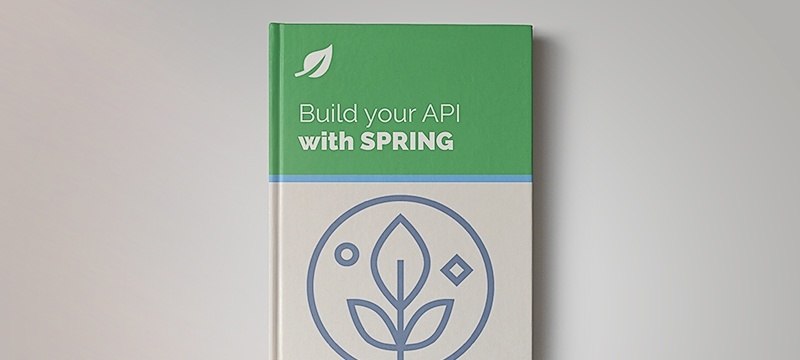1. Overview
Spring Boot web applications include a pre-configured, embedded web server by default. In some situations, though, we’d like to modify the default configuration to meet custom requirements.
In this tutorial, we’ll look at a few common use cases for configuring the Tomcat embedded server through the application.properties file.
2. Common Embedded Tomcat Configurations
2.1. Server Address and Port
The most common configuration we may wish to change is the port number:
server.port=80
If we don’t provide the server.port parameter it’s set to 8080 by default.
In some cases, we may wish to set a n
server.address=my_custom_ip
By default, the value is set to 0.0.0.0, which allows connection via all IPv4 addresses. Setting another value, for example, localhost – 127.0.0.1 – will make the server more selective.
2.2. Error Handling
By default, Spring Boot provides a standard error web page. This page is called the Whitelabel. It’s enabled by default, but if we don’t want to display any error information, we can disable it:
server.error.whitelabel.enabled=false
The default path to a Whitelabel is /error. We can customize it by setting the server.error.path parameter:
server.error.path=/user-error
We can also set properties that will determine which information about the error is presented. For example, we can include the error message and the stack trace:
server.error.include-exception=true
server.error.include-stacktrace=always
Our tutorials Exception Message Handling for REST and Customize Whitelabel Error Page explain more about handling errors in Spring Boot.
2.3. Server Connections
When running on a low resource container, we might like to decrease the CPU and memory load. One way of doing that is to limit the number of simultaneous requests that can be handled by our application. Conversely, we can increase this value to use more available resources to get better performance.
In Spring Boot, we can define the maximum amount of Tomcat worker threads:
server.tomcat.threads.max=200
When configuring a web server, it also might be useful to set the server connection timeout. This represents the maximum amount of time the server will wait for the client to make their request after connecting before the connection is closed:
server.connection-timeout=5s
We can also define the maximum size of a request header:
server.max-http-header-size=8KB
The maximum size of a request body:
server.tomcat.max-swallow-size=2MB
Or a maximum size of the whole post request:
server.tomcat.max-http-post-size=2MB
2.4. SSL
To enable SSL support in our Spring Boot application, we need to set the server.ssl.enabled property to true and define an SSL protocol:
server.ssl.enabled=true
server.ssl.protocol=TLS
We should also configure the password, type, and path to the key store that holds the certificate:
server.ssl.key-store-password=my_password
server.ssl.key-store-type=keystore_type
server.ssl.key-store=keystore-path
And we must also define the alias that identifies our key in the key store:
server.ssl.key-alias=tomcat
For more information about SSL configuration, visit our HTTPS using a self-signed certificate in the Spring Boot article.
2.5. Tomcat Server Access Logs
Tomcat access logs are beneficial when measuring page hit counts, user session activity, and so on.
To enable access logs, simply set:
server.tomcat.accesslog.enabled=true
We should also configure other parameters such as directory name, prefix, suffix, and date format appended to log files:
server.tomcat.accesslog.directory=logs
server.tomcat.accesslog.file-date-format=yyyy-MM-dd
server.tomcat.accesslog.prefix=access_log
server.tomcat.accesslog.suffix=.log
3. Embedded Tomcat’s Version
We can’t change Tomcat’s version being used by configuring our application.properties file. It’s a bit more complicated and mainly depends on whether we use spring-boot-starter-parent or not.
Before we proceed, however, we must be aware that each Spring Boot release is designed and tested against the specific Tomcat version. If we change it, we may face some unexpected compatibility issues.
3.1. Using spring-boot-starter-parent
If we use Maven and configure our project to inherit from the spring-boot-starter-parent, we can override individual dependencies by overwriting a specific property in our pom.xml.
With that in mind, to update the Tomcat version, we must use the tomcat.version property:
<properties>
<tomcat.version>9.0.44</tomcat.version>
</properties>
3.2. Using spring-boot-dependencies
There are situations when we don’t want to or can’t use the spring-boot-starter-parent. For example, if we use a custom parent in our Spring Boot project. In such cases, there’s a great chance we use spring-boot-dependency to still benefit from the dependency management.
This setup, however, doesn’t let us override individual dependencies by using Maven properties, as shown in the preceding section.
To achieve the same goal and still use a different Tomcat version, we need to add an entry in the dependencyManagement section of our pom file. The crucial thing to remember is that we must place it before the spring-boot-dependencies:
<dependencyManagement>
<dependencies>
<dependency>
<groupId>org.apache.tomcat.embed</groupId>
<artifactId>tomcat-embed-core</artifactId>
<version>9.0.44</version>
</dependency>
<dependency>
<groupId>org.springframework.boot</groupId>
<artifactId>spring-boot-dependencies</artifactId>
<version>2.4.5</version>
<type>pom</type>
<scope>import</scope>
</dependency>
</dependencies>
</dependencyManagement>
4. Conclusion
In this tutorial, we’ve learned a few common Tomcat embedded server configurations. To view more possible configurations, please visit the official Spring Boot application properties docs page.
As always, the source code for these examples is available over on GitHub.





